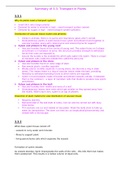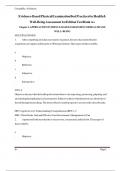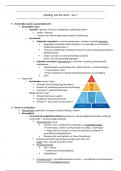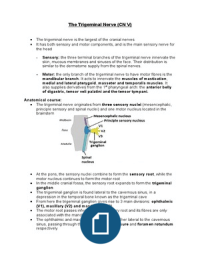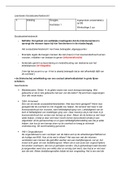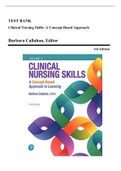Summary
A level Biology Transport in Plants FULL summary notes by an A* student
A level Biology Transport in Plants FULL summary notes by an A* student. Includes FULL and easy information about xylem, phloem, companion cells, water flow, transpiration, translocation. Top grades A/A* notes. Short and concise. Affordable lecture notes suitable for A levels, GCSE, IB, Cambridge e...
[Show more]
